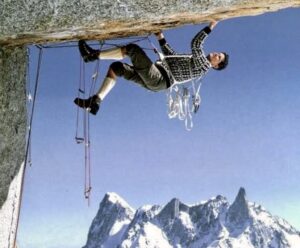Learning to train at the proper intensity without the use of technology may sound daunting, but doing so can often be the best method of all. Relying on internal cues and metrics like RPE offers many distinct advantages over traditional metrics like pace and heart rate. Through consistent use of RPE and WIR, you can optimize your training intensity to achieve the best possible results!
Whether you work with a coach or train on your own, it’s very likely that you’ve come across Rate of Perceived Effort, or RPE, in your training program. When prescribing a specific pace or heart rate zone may not be appropriate for a given workout, it is useful to prescribe a relative intensity and allow the athlete to complete a workout “by feel”, using an estimated best effort as a reference point from which to adjust the effort to a specified sub-maximal intensity level. Fitness professionals may split hairs about how to define each number on the 1 to 10 scale, but there is one key point that must not be overlooked: RPE is always relative and should be defined in context. I have heard an athlete say that they could “never maintain RPE 10 for a marathon”, yet in reality, they actually can! RPE 10 for a marathon is exactly marathon race pace, nothing more or less. Don’t forget to define your intensity zones relative to a max effort across the same duration. Training with metrics like RPE offers a few distinct advantages over certain objective metrics, but there are practical limitations as well.
While RPE can be incredibly simple and effective, it is inherently imprecise and leaves a lot of room for guesswork. Is there a way to still use a subjective system, but reduce inter-rater variability? In relatively experienced athletes, there is. Systems like WIR or “work in reserve” still allow for athletes to develop a proactive rather than reactive approach to pacing and energy system management, but are less ambiguous in their definitions. WIR can usually be broken down into DIR (distance/duration in reserve) and RIR (repetitions in reserve). Imagine completing 10 x 400m @ 5k race pace with specified rest intervals. If you think that you could have done 12 x 400m at the same pace, but your 13th repeat would have been off pace, then you had 2 repetitions in reserve. You can take this a step further and simply prescribe 10 x 400m to an intensity of “2 RIR”. In this scenario, you bypass the use of pace entirely. An experienced athlete with good pacing skills will be able to adjust their pace within the first few repeats and achieve the desired training stimulus. Likewise, use of DIR for steady state runs and longer intervals offers a subjective yet reliable measure of difficulty. You may prescribe a 30:00 climb with 15:00 in reserve, or 4 x 2km repeats with 500m in reserve per repeat. In each case, you can fine tune the DIR to get the stimulus you’re looking for without having to use specific paces. For athletes training on varied terrain or in changing weather conditions, specific paces and heart rates can be problematic, but RIR/DIR are consistent and reliable measures of intensity.
Both hard data and subjective difficulty are both very important parts of post-workout analysis and training program design, but both are much more beneficial in conjunction with the other. If you track every step and have GPS/HR data for every workout but are never recording simple things like how hard the workout felt, you are missing a crucial piece of the puzzle. On the other hand, you may be using systems like RIR/DIR without even knowing it. “Felt like I could have gone another mile or two”. “I couldn’t have done even one more repeat that fast. My legs were toast”. That’s it! By formalizing this kind of feedback and leaving it regularly, you’ll be able to analyze your workouts better than ever before, and without the need for any high-tech wearables or expensive software.
If you want to take advantage of the benefits offered by RPE and WIR systems, you can get started right away. The next time you make an entry into your training log, be sure to take the extra few moments to write honest feedback by asking yourself the following questions. On a scale of 1-10, how hard was the workout? Without modifying intensity, how many more repeats or kilometers could you have completed before failing? The next time you plan a similar workout, review your personal feedback from the last session and adjust your workout accordingly. You’ll be amazed at how simple, easy, and effective these systems are to use!






